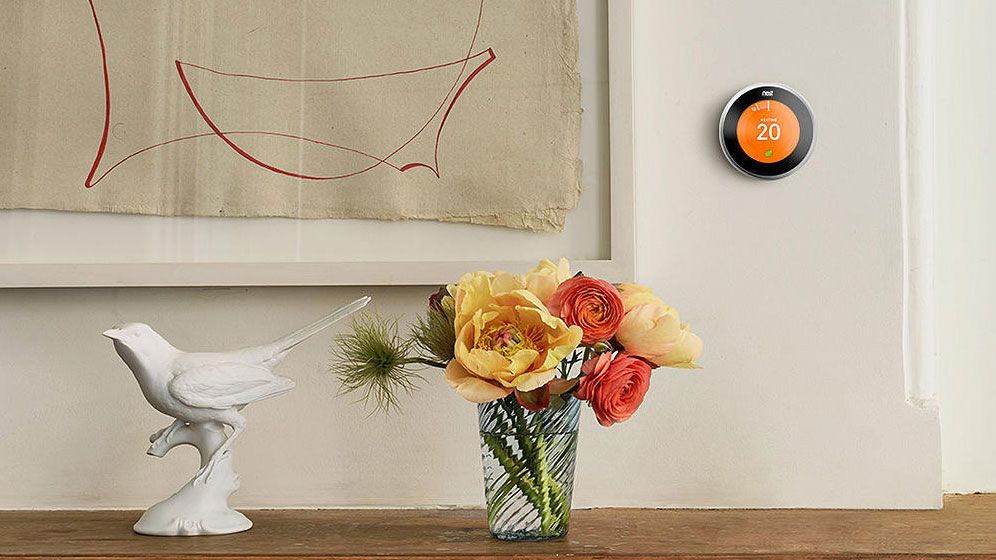
What is a smart thermostat, and do you really need one? You may have heard claims that the best smart thermostats can save users a significant amount of money and energy by making it easier than ever to keep a closer eye on your heating behaviours. In fact, it's this claim that has made the smart devices so popular. But, do the expectations match the reality?
Whether your interest in smart thermostats has been sparked by a desire to save money, reduce your impact on the environment or expand a pre-existing smart home system, we talk you through their key talking points and whether they're really worth the investment.
What is a smart thermostat?
Where can I buy a smart thermostat?
Put simply, smart thermostats allow you to remotely control your home's central heating system through your smart phone, tablet, computer or using voice activation via your smart assistant.
In addition to making your heating system more efficient, smart thermostats can also help users troubleshoot pipe and boiler related problems, which is perfect if you're conscious about frozen pipes in a period property. Plus, some have the ability to learn your heating behaviours, over time, helping you streamline your energy use.
You need a smart thermostat if...
1. You want to save money
This is the biggie. Bills hit us where it hurts – in the piggybank. But, smart thermostats, which can help you regulate your homes heating habits, more precisely, can mean saving money on monthly bills. We've considered the money saving potential from both perspectives:
Smart thermostats will save you money
- By giving you greater control over your heating schedule – which can be controlled from a smartphone – you'll find you're only using your heating when you really need it.
- Learning systems are able to monitor and maintain a comfortable temperature rather than overheating, and switching themselves off if you’re not present.
- Set up geo-locations, so your heating automatically turns off when you leave home. You'll never have to worry about forgetting again.
- Receive monthly energy reports which feed back where the bulk of your bills are going. Make adjustments the following months and see prices fall.
- Troubleshoot problems with pipes and boilers, before they happen, and save yourself the cost of a total refit later down the line.
Smart thermostats require an initial investment
- It's worth noting, however, that a smart thermostat is going to be a bit pricier than your standard thermostat.
- You will also want to consider the cost of professional installation.
2. You want to reduce your impact on the environment
Ultimately, if you’re saving money with a smart thermostat, that’s because you’re using less energy. Smart thermostats are designed to enable users to optimise their energy use, as well as recognising where reductions can be made, thanks to monthly reports.
And even if you don't care about the environment, it's a handy by-product of everything else a smart thermostat has to offer.
3. You want to create an automatic heating schedule
Some of the top performing smart thermostats – such as the Nest Learning Thermostat – are capable of 'learning' your heating habits, and then optimising them. In real terms this means:
- Learning your commute times and preparing your home's temperature in time for your return.
- Turning off, automatically, when you leave the house.
- Adjusting to keep your home at an optimum temperature, whatever the season.
- Making ad-hoc changes, should there be a drastic change in temperature throughout the day.
4. You want to regulate your home's temperature
Who hasn’t ever wanted to speak to their radiator? No? No one? Well, OK, it’s a niche need, but there’s something quite fun and space aged about being able to speak to your smart home controller of choice, be that Amazon’s Alexa, Apple’s Siri or Google’s Assistant, and have it magically regulate the temperature without you having to lift a finger.
All the best smart thermostats integrate with the big three voice assistants you’ll find in your phones or smart speakers, and can easily be set up to communicate with each, giving you hands-free voice control of your home climate.
If a smart heating system will be your first step into the world of smart home tech, you'll find our beginners guide to smart assistant's a handy read. Got a preference? Read our reviews below, before making a final choice.
5. You want a thermostat that's aesthetically appealing
If (like us) the aesthetic appeal of your thermostat is a prominent factor in the decision making process, we're here to reassure you that smart thermostats, unlike many of their non-smart ancestors, have come a long way in terms of style.
Devices like the Nest Learning Thermostat – which, if you couldn't tell, is our top pick – feature beautiful coloured touch screens that are not only easy to program, but pretty easy on the eye, too. And if you did want yours completely out of sight, most are small and easily hidden away inside a cupboard.
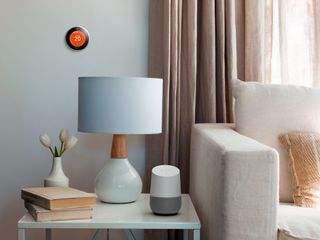
Smart thermostat by Nest
6. You want to control your heating remotely
One of the great things about having a smart thermostat is the fact that, once it’s begun to learn your routine, you don’t have to worry about it as it goes about its work.
But, if it’s still in the process of learning your habits, or you're on your way back from a cold, Saturday morning watching the kids play football/rugby/netball and want an extra boost of warmth to thoroughly defrost your toes, you’ll be able to remotely set the thermostat and its timer by using its associated app, while you’re out and about.
7. You want to build a wider smart home system
If you’re jumping all in and building – or expanding – an existing smart home system, you'll be pleased to know that a smart thermostat can enhance your home's potential by adding new sensors into the mix. In real terms this could mean:
- Using devices such as the Elgato Eve Motion and Hive Motion Sensor to track movement in your home.
- Investing in the Devolo Home Control Humidity Sensor to track the amount of water vapour present.
Once such gadgets are connected to your smart home hub of choice, you can use an IFTTT (‘If This, Then That’) application to set pre-programmed instructions for your thermostat to carry out based on the readings coming from each sensor.
So, if the motion sensor notes you walking around in your home after a cold, hard day at work, it can automatically send a message to your thermostat that it’s time to crank up the heating. Genius.
8. You want to track your spending
With a regular thermostat, you can get your energy bill and be left scratching your head as to exactly how you managed to spend quite so much money on hot water. Those showers were super short, right?
With a smart thermostat and the mobile applications they often pair up with, you’ll be able to pinpoint exactly when your usage is spiking and driving the cost of your bills up. Just be ready to have a stern word with your other half on maybe cutting back on those two secret daily baths they’re having while you’re not there...
9. You want very specific temperature control
Unlike many older thermostats, smart solutions give users minute control over temperatures around the home – not just to a degree, but even within a degree if you’re really picky.
Plus, a vibrant display and simpler controls mean it’s easy to see exactly when and how quickly something is heating up, making it easy to monitor and maintain your homes heating.
10. You want your heating system to adapt, depending on the weather
What with the aforementioned global warming, you've probably experienced an extreme weather transformation, at some point, or other.
With a regular thermostat you’d either have to manually set the temperature to something more comfortable, or grin, sweat, and bear it rather than reset your painfully programmed heating routine.
But, with models such as the latest Ecobee Smart Thermostat, sensors automatically adapt and anticipate your needs based on incoming weather reports. As such, your smart thermostat will be able to make tweaks to room temperature without you even having to think about it.
11. You want to create heating zones throughout your home
If you find that your heating preferences differ somewhat from your partner's, kids', or housemates', investing in a smart thermostat could mean avoiding daily temperature battles.
With systems such as the Honeywell EvoHome, it's possible to create up to 12 heating zones throughout your home to suit a variety of requirements.
The best smart thermostats
Decided a smart thermostat is worth the investment? Browse our top three, below:
1. Nest Learning Thermostat
Stylish and intelligent, the Nest Learning Thermostat is the top smart thermostat around. Here's everything you need to know about it:
- It learns your behaviour – designed to learn and interpret your heating behaviours, this clever smart thermostat quickly becomes familiar with your preferences, as well as your daily routine, and, as such, can help you optimise your energy use.
- Controls your hot water – in addition to controlling your heating, it's also possible to control your hot water from your smartphone.
- Monitor your savings – half the fun of saving money is knowing how much you're saving, right? Thanks to monthly progress reports, monitoring your energy use is easier than ever.
- Build a wider smart home system – in addition to being compatible with Alexa, Google Assistant and Siri, which is perfect if you're building a wider smart home system, it's possible to connect Nest Protect (sold separately) to your heating system, to protect your home against carbon monoxide leaks.
- Stylish design – available in four stylish colourways – black, white, copper and stainless steel – you're sure to find a design that works with your interiors taste.
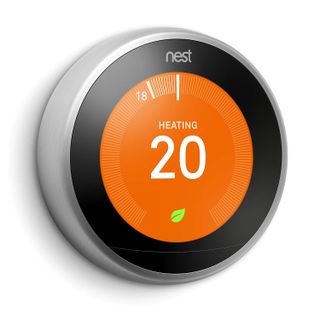
2. Tado Smart Thermostat
An impressive option given its budget-friendly price point, the Tado Smart Thermostat is another of our top rated smart thermostats. Here are our favourite features:
- Climate assistant – much like the, slightly more expensive Nest Learning Thermostat, this model from Tado is designed to learn your heating behaviours and self-adjust, accordingly. Plus, it offers practical advice on how to reduce mould, humidity and more.
- Create geofences – perfect for those who have a tendency to forget to turn off the heating, before leaving the house, this model uses GPS to track your location and automatically turn off the heating once you step outside a custom geofence.
- Affordable option – despite coming in at half the price of some models on the market, the Tado is compatible with a real range of heating systems, including underfloor heating.
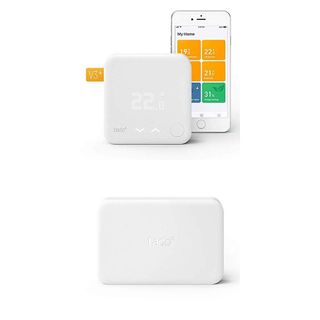
3. Honeywell Evohome
Perfect for those installing smart thermostats in larger homes, the Honeywell Evohome is another of our top rated models. Here's why:
- Smart zoning – create up to 12, custom heating zones, according to individual preferences and control them all from your smartphone.
- Heating analysis – perfect for those who are looking to learn more about their heating habits, and make changes accordingly, this model offer in-depth analysis which can be accessed with ease.
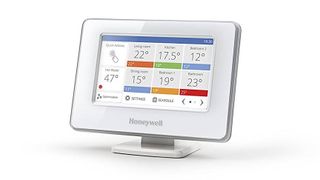
Want to find out more about home tech?
Join our newsletter
Get small space home decor ideas, celeb inspiration, DIY tips and more, straight to your inbox!
-
 The best automatic pet feeder: time feeds even when you’re not at home
The best automatic pet feeder: time feeds even when you’re not at homeOur pick of the best automatic pet feeders are designed to ensure your furry friend never goes hungry. Automate feeding time and control portions with these handy feeders
By Emily Shaw Published
-
 Dyson Supersonic review: it completely changed the way I blow-dry my hair
Dyson Supersonic review: it completely changed the way I blow-dry my hairAfter one use, the Dyson Supersonic left my hair smoother, softer, and more manageable — in half the time it usually takes to blow dry my hair
By Brittany Romano Published
-
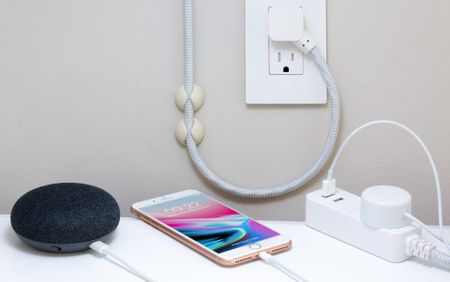 The most useful smart-home tech updates from CES 2021
The most useful smart-home tech updates from CES 20215 new smart-home products to help you work smarter, not harder this year.
By Ann Loynd Burton Published
-
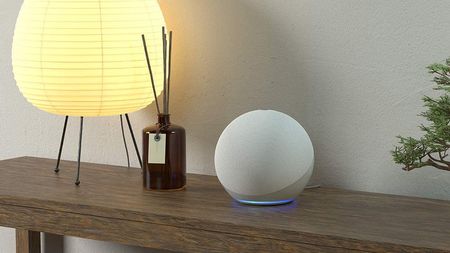 The best things to ask Alexa – 25 questions and commands for this voice assistant
The best things to ask Alexa – 25 questions and commands for this voice assistantThese are the best things to ask Alexa – to help you in daily life, to make you laugh and more
By Annie Collyer Last updated
-
 No green thumb? A smart garden makes growing herbs foolproof
No green thumb? A smart garden makes growing herbs foolproofA smart garden is the easiest way to bring your outdoor plants, indoors and we've found the perfect one.
By Brittany Romano Published
-
 Virgin Media deals: the very best package deals
Virgin Media deals: the very best package dealsThe best Virgin Media deal is only £24 per month and it comes with a free £50 Amazon voucher...
By Annie Collyer Published
-
 Best Fitbit: 6 top health trackers for all fitness levels
Best Fitbit: 6 top health trackers for all fitness levelsThese are the very best Fitbits to buy, no matter your fitness level or what you are planning to use it for
By Emily Shaw Published
-
 Best smart Christmas lights: control your festive lighting the smart way
Best smart Christmas lights: control your festive lighting the smart wayBright idea: Invest in smart Christmas lights and give your home a magical boost!
By Niamh Quinn Published